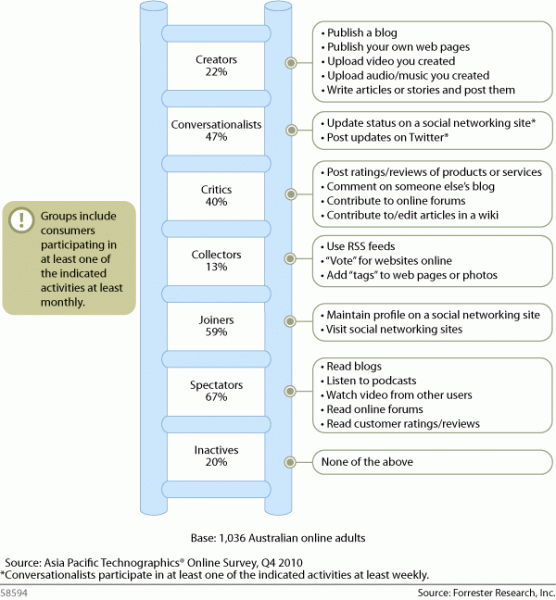Aussies Love Social Media — But How Should eBusiness Respond?
"Online Australians Shift To Social Networks" is my new report that showcases Forrester's latest data about social media use in Australia.
The report is written for marketers, but these days, my main role at Forrester is to serve the eBusiness & Channel Strategy professional. So naturally, I find myself asking what these new numbers might mean for eBusiness in Australia.
The report's top-line message is continued growth. In particular, the report shows that the absolute number of Australians who regularly use social media has increased to an all-time high of 13.4 million people. However, I'd class that nugget as a "nice to know." It's a useful stat to use the next time you get in one of those tedious debates about why social media matters at all, but the Australian eBusiness leaders I speak with have largely passed that point. Their burning question is not whether to use social media at all. Instead, they want to know what tools and tactics to prioritize, so let's address three of the most common social commerce practices.
- Creating compelling content. The single most common way in which Australians interact with social media is by consuming content — a set of activities that puts them in the Spectators group in our Social Technographics® system. (See graphic below.) This means different things for different roles. For the head of marketing at an online retailer, a common goal is to create a brand that turns heads and wins fans by creating content that goes beyond the product, inspiring people to share and watch it en masse. But the head of eBusiness — who I'm writing for in this blog post — has more specific focus. She or he needs content that maximizes the impact of the online channel and any other channels under his or her control. In this mission, the most pressing need is for compelling product content — photos, videos, specs, and descriptions — which is essential for driving conversion. But don't think that you, as the head of eBusiness, must personally create or source it all. The UK online retailer FireBox rewards users with a £50 voucher if they upload videos of their products in use. Let your imagination run wild.
- Encourage customer reviews. Australians like to have a say, with many leaving comments, edits, ratings, and reviews on websites — a set of activities that puts them in the Critics group. This will be a relief to many Australian online retailers because large numbers are currently working to bring customer ratings and reviews to their storefronts, as discussed in the "Online Retailing In Australia 2010: Marketing, Merchandising, And Customer Service" report. Our research has consistently shown that of all social commerce technologies, customer ratings, and reviews have the greatest mainstream impact today and in the years ahead. (For example, see the "TechRadar™ For eBusiness And Channel Strategy Professionals: Social Commerce, Q1 2010" report.) This is one trend that every head of eBusiness should be across. Thankfully, many online retailers in Australia now appreciate its importance and are pedaling fast to catch up.
- Be realistic about social networks. The report highlights two booms in Australia: in the use of social networks (by Joiners, in our Social Technographics system), and in the use of status updates for chit-chat (by Conversationalists). eBusiness leaders should be aware of these trends and factor them into their plans, but they should also be realistic about where and how they will affect eBusiness practices in the medium term. For heads of eBusiness who are completely focused on acquisition and conversion, the return on cultivating Facebook fans or Twitter followers can vary greatly. However, some heads of eBusiness have a broader remit that goes well beyond acquisition and converstion. If their view includes customer service and other key interactions throughout the customer life cycle, then the fact that customers are more likely than ever before to chat online offers some intriguing possibilities. Significant Australian eBusinesses like Telstra and CommBank have already taken strides in the provision of social customer support, and this should definately be on the radar for Australian eBusiness. (For example, see the "Getting Social Customer Service Right" report.)
